Zhiqi Shen
Learning Item Representations Directly from Multimodal Features for Effective Recommendation
May 08, 2025Abstract:Conventional multimodal recommender systems predominantly leverage Bayesian Personalized Ranking (BPR) optimization to learn item representations by amalgamating item identity (ID) embeddings with multimodal features. Nevertheless, our empirical and theoretical findings unequivocally demonstrate a pronounced optimization gradient bias in favor of acquiring representations from multimodal features over item ID embeddings. As a consequence, item ID embeddings frequently exhibit suboptimal characteristics despite the convergence of multimodal feature parameters. Given the rich informational content inherent in multimodal features, in this paper, we propose a novel model (i.e., LIRDRec) that learns item representations directly from these features to augment recommendation performance. Recognizing that features derived from each modality may capture disparate yet correlated aspects of items, we propose a multimodal transformation mechanism, integrated with modality-specific encoders, to effectively fuse features from all modalities. Moreover, to differentiate the influence of diverse modality types, we devise a progressive weight copying fusion module within LIRDRec. This module incrementally learns the weight assigned to each modality in synthesizing the final user or item representations. Finally, we utilize the powerful visual understanding of Multimodal Large Language Models (MLLMs) to convert the item images into texts and extract semantics embeddings upon the texts via LLMs. Empirical evaluations conducted on five real-world datasets validate the superiority of our approach relative to competing baselines. It is worth noting the proposed model, equipped with embeddings extracted from MLLMs and LLMs, can further improve the recommendation accuracy of NDCG@20 by an average of 4.21% compared to the original embeddings.
Self-Bootstrapping for Versatile Test-Time Adaptation
Apr 10, 2025Abstract:In this paper, we seek to develop a versatile test-time adaptation (TTA) objective for a variety of tasks - classification and regression across image-, object-, and pixel-level predictions. We achieve this through a self-bootstrapping scheme that optimizes prediction consistency between the test image (as target) and its deteriorated view. The key challenge lies in devising effective augmentations/deteriorations that: i) preserve the image's geometric information, e.g., object sizes and locations, which is crucial for TTA on object/pixel-level tasks, and ii) provide sufficient learning signals for TTA. To this end, we analyze how common distribution shifts affect the image's information power across spatial frequencies in the Fourier domain, and reveal that low-frequency components carry high power and masking these components supplies more learning signals, while masking high-frequency components can not. In light of this, we randomly mask the low-frequency amplitude of an image in its Fourier domain for augmentation. Meanwhile, we also augment the image with noise injection to compensate for missing learning signals at high frequencies, by enhancing the information power there. Experiments show that, either independently or as a plug-and-play module, our method achieves superior results across classification, segmentation, and 3D monocular detection tasks with both transformer and CNN models.
An Intelligent and Privacy-Preserving Digital Twin Model for Aging-in-Place
Apr 04, 2025Abstract:The population of older adults is steadily increasing, with a strong preference for aging-in-place rather than moving to care facilities. Consequently, supporting this growing demographic has become a significant global challenge. However, facilitating successful aging-in-place is challenging, requiring consideration of multiple factors such as data privacy, health status monitoring, and living environments to improve health outcomes. In this paper, we propose an unobtrusive sensor system designed for installation in older adults' homes. Using data from the sensors, our system constructs a digital twin, a virtual representation of events and activities that occurred in the home. The system uses neural network models and decision rules to capture residents' activities and living environments. This digital twin enables continuous health monitoring by providing actionable insights into residents' well-being. Our system is designed to be low-cost and privacy-preserving, with the aim of providing green and safe monitoring for the health of older adults. We have successfully deployed our system in two homes over a time period of two months, and our findings demonstrate the feasibility and effectiveness of digital twin technology in supporting independent living for older adults. This study highlights that our system could revolutionize elder care by enabling personalized interventions, such as lifestyle adjustments, medical treatments, or modifications to the residential environment, to enhance health outcomes.
TS-LIF: A Temporal Segment Spiking Neuron Network for Time Series Forecasting
Mar 07, 2025Abstract:Spiking Neural Networks (SNNs) offer a promising, biologically inspired approach for processing spatiotemporal data, particularly for time series forecasting. However, conventional neuron models like the Leaky Integrate-and-Fire (LIF) struggle to capture long-term dependencies and effectively process multi-scale temporal dynamics. To overcome these limitations, we introduce the Temporal Segment Leaky Integrate-and-Fire (TS-LIF) model, featuring a novel dual-compartment architecture. The dendritic and somatic compartments specialize in capturing distinct frequency components, providing functional heterogeneity that enhances the neuron's ability to process both low- and high-frequency information. Furthermore, the newly introduced direct somatic current injection reduces information loss during intra-neuronal transmission, while dendritic spike generation improves multi-scale information extraction. We provide a theoretical stability analysis of the TS-LIF model and explain how each compartment contributes to distinct frequency response characteristics. Experimental results show that TS-LIF outperforms traditional SNNs in time series forecasting, demonstrating better accuracy and robustness, even with missing data. TS-LIF advances the application of SNNs in time-series forecasting, providing a biologically inspired approach that captures complex temporal dynamics and offers potential for practical implementation in diverse forecasting scenarios. The source code is available at https://github.com/kkking-kk/TS-LIF.
GiFT: Gibbs Fine-Tuning for Code Generation
Feb 17, 2025Abstract:Training Large Language Models (LLMs) with synthetic data is a prevalent practice in code generation. A key approach is self-training, where LLMs are iteratively trained on self-generated correct code snippets. In this case, the self-generated codes are drawn from a conditional distribution, conditioned on a specific seed description. However, the seed description is not the only valid representation that aligns with its intended meaning. With all valid descriptions and codes forming a joint space, codes drawn from the conditional distribution would lead to an underrepresentation of the full description-code space. As such, we propose Gibbs Fine-Tuning (GiFT), a novel self-training method inspired by Gibbs sampling. GiFT allows self-generated data to be drawn from the marginal distribution of the joint space, thereby mitigating the biases inherent in conditional sampling. We provide a theoretical analysis demonstrating the potential benefits of fine-tuning LLMs with code derived from the marginal distribution. Furthermore, we propose a perplexity-based code selection method to mitigate the imbalanced long-tail distribution of the self-generated codes. Empirical evaluation of two LLMs across four datasets demonstrates that GiFT achieves superior performance, particularly on more challenging benchmarks.
HDT: Hierarchical Discrete Transformer for Multivariate Time Series Forecasting
Feb 12, 2025Abstract:Generative models have gained significant attention in multivariate time series forecasting (MTS), particularly due to their ability to generate high-fidelity samples. Forecasting the probability distribution of multivariate time series is a challenging yet practical task. Although some recent attempts have been made to handle this task, two major challenges persist: 1) some existing generative methods underperform in high-dimensional multivariate time series forecasting, which is hard to scale to higher dimensions; 2) the inherent high-dimensional multivariate attributes constrain the forecasting lengths of existing generative models. In this paper, we point out that discrete token representations can model high-dimensional MTS with faster inference time, and forecasting the target with long-term trends of itself can extend the forecasting length with high accuracy. Motivated by this, we propose a vector quantized framework called Hierarchical Discrete Transformer (HDT) that models time series into discrete token representations with l2 normalization enhanced vector quantized strategy, in which we transform the MTS forecasting into discrete tokens generation. To address the limitations of generative models in long-term forecasting, we propose a hierarchical discrete Transformer. This model captures the discrete long-term trend of the target at the low level and leverages this trend as a condition to generate the discrete representation of the target at the high level that introduces the features of the target itself to extend the forecasting length in high-dimensional MTS. Extensive experiments on five popular MTS datasets verify the effectiveness of our proposed method.
Learning to Learn Weight Generation via Trajectory Diffusion
Feb 03, 2025



Abstract:Diffusion-based algorithms have emerged as promising techniques for weight generation, particularly in scenarios like multi-task learning that require frequent weight updates. However, existing solutions suffer from limited cross-task transferability. In addition, they only utilize optimal weights as training samples, ignoring the value of other weights in the optimization process. To address these issues, we propose Lt-Di, which integrates the diffusion algorithm with meta-learning to generate weights for unseen tasks. Furthermore, we extend the vanilla diffusion algorithm into a trajectory diffusion algorithm to utilize other weights along the optimization trajectory. Trajectory diffusion decomposes the entire diffusion chain into multiple shorter ones, improving training and inference efficiency. We analyze the convergence properties of the weight generation paradigm and improve convergence efficiency without additional time overhead. Our experiments demonstrate Lt-Di's higher accuracy while reducing computational overhead across various tasks, including zero-shot and few-shot learning, multi-domain generalization, and large-scale language model fine-tuning.Our code is released at https://github.com/tuantuange/Lt-Di.
A Generalizable Anomaly Detection Method in Dynamic Graphs
Dec 21, 2024Abstract:Anomaly detection aims to identify deviations from normal patterns within data. This task is particularly crucial in dynamic graphs, which are common in applications like social networks and cybersecurity, due to their evolving structures and complex relationships. Although recent deep learning-based methods have shown promising results in anomaly detection on dynamic graphs, they often lack of generalizability. In this study, we propose GeneralDyG, a method that samples temporal ego-graphs and sequentially extracts structural and temporal features to address the three key challenges in achieving generalizability: Data Diversity, Dynamic Feature Capture, and Computational Cost. Extensive experimental results demonstrate that our proposed GeneralDyG significantly outperforms state-of-the-art methods on four real-world datasets.
LampMark: Proactive Deepfake Detection via Training-Free Landmark Perceptual Watermarks
Nov 26, 2024


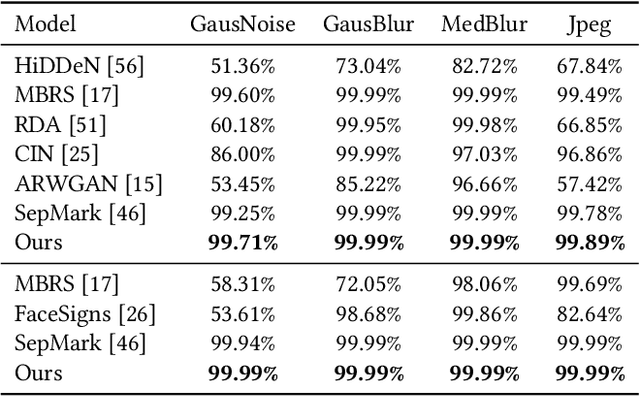
Abstract:Deepfake facial manipulation has garnered significant public attention due to its impacts on enhancing human experiences and posing privacy threats. Despite numerous passive algorithms that have been attempted to thwart malicious Deepfake attacks, they mostly struggle with the generalizability challenge when confronted with hyper-realistic synthetic facial images. To tackle the problem, this paper proposes a proactive Deepfake detection approach by introducing a novel training-free landmark perceptual watermark, LampMark for short. We first analyze the structure-sensitive characteristics of Deepfake manipulations and devise a secure and confidential transformation pipeline from the structural representations, i.e. facial landmarks, to binary landmark perceptual watermarks. Subsequently, we present an end-to-end watermarking framework that imperceptibly and robustly embeds and extracts watermarks concerning the images to be protected. Relying on promising watermark recovery accuracies, Deepfake detection is accomplished by assessing the consistency between the content-matched landmark perceptual watermark and the robustly recovered watermark of the suspect image. Experimental results demonstrate the superior performance of our approach in watermark recovery and Deepfake detection compared to state-of-the-art methods across in-dataset, cross-dataset, and cross-manipulation scenarios.
Advancing Sustainability via Recommender Systems: A Survey
Nov 12, 2024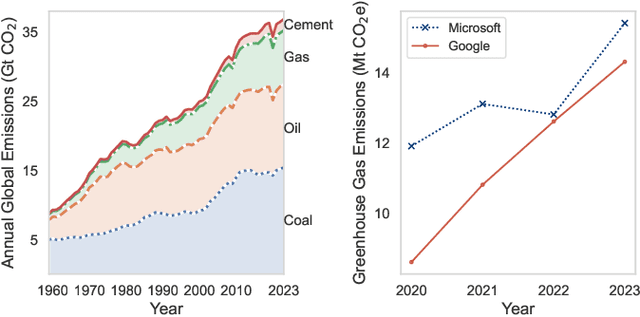
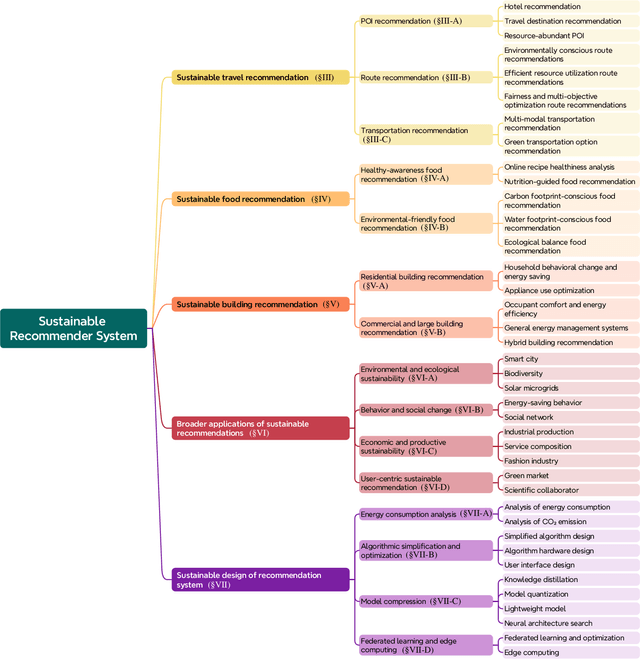
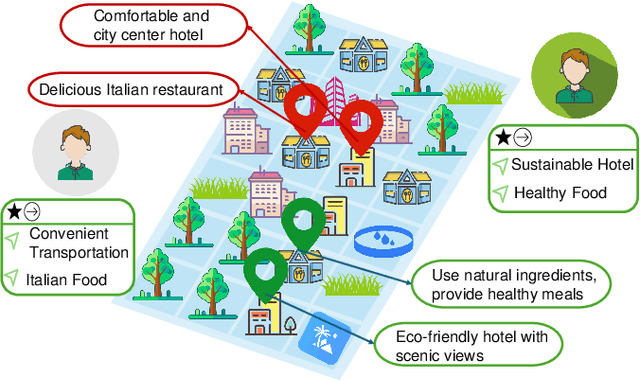
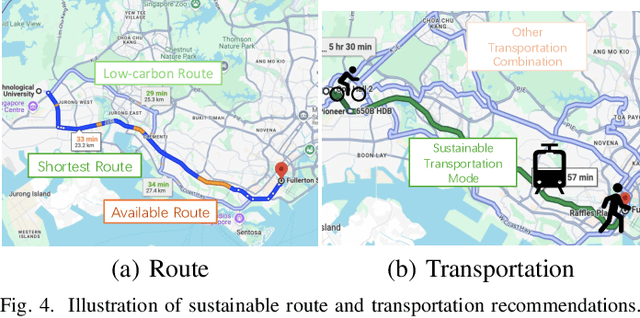
Abstract:Human behavioral patterns and consumption paradigms have emerged as pivotal determinants in environmental degradation and climate change, with quotidian decisions pertaining to transportation, energy utilization, and resource consumption collectively precipitating substantial ecological impacts. Recommender systems, which generate personalized suggestions based on user preferences and historical interaction data, exert considerable influence on individual behavioral trajectories. However, conventional recommender systems predominantly optimize for user engagement and economic metrics, inadvertently neglecting the environmental and societal ramifications of their recommendations, potentially catalyzing over-consumption and reinforcing unsustainable behavioral patterns. Given their instrumental role in shaping user decisions, there exists an imperative need for sustainable recommender systems that incorporate sustainability principles to foster eco-conscious and socially responsible choices. This comprehensive survey addresses this critical research gap by presenting a systematic analysis of sustainable recommender systems. As these systems can simultaneously advance multiple sustainability objectives--including resource conservation, sustainable consumer behavior, and social impact enhancement--examining their implementations across distinct application domains provides a more rigorous analytical framework. Through a methodological analysis of domain-specific implementations encompassing transportation, food, buildings, and auxiliary sectors, we can better elucidate how these systems holistically advance sustainability objectives while addressing sector-specific constraints and opportunities. Moreover, we delineate future research directions for evolving recommender systems beyond sustainability advocacy toward fostering environmental resilience and social consciousness in society.
 Add to Chrome
Add to Chrome Add to Firefox
Add to Firefox Add to Edge
Add to Edge